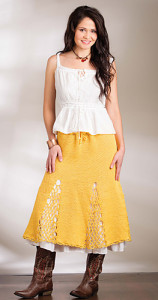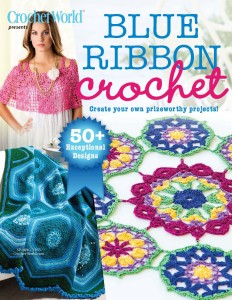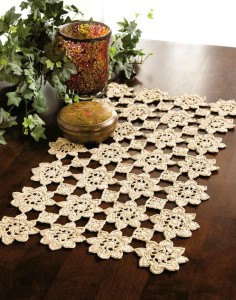Corner to Corner in the round is a great technique that lends itself to a fun look while being a relaxing project. This technique was brought to my attention by one of my students, as she was asking how to create it. After some research I discover it here.
Essentially you are creating the beginning of 4 corner to corner blankets at the same time. You only have to work the increases, and just increase from the one corner of a blanket, to then work the next increase of the next blanket.
The first few rounds can be a bit fiddly, but after that it becomes pretty easy.
Getting Started
To get started you create a chain 7, dc in the 4th chain from the hook, and in each ch across. There will be 4 dc and the turning chain.
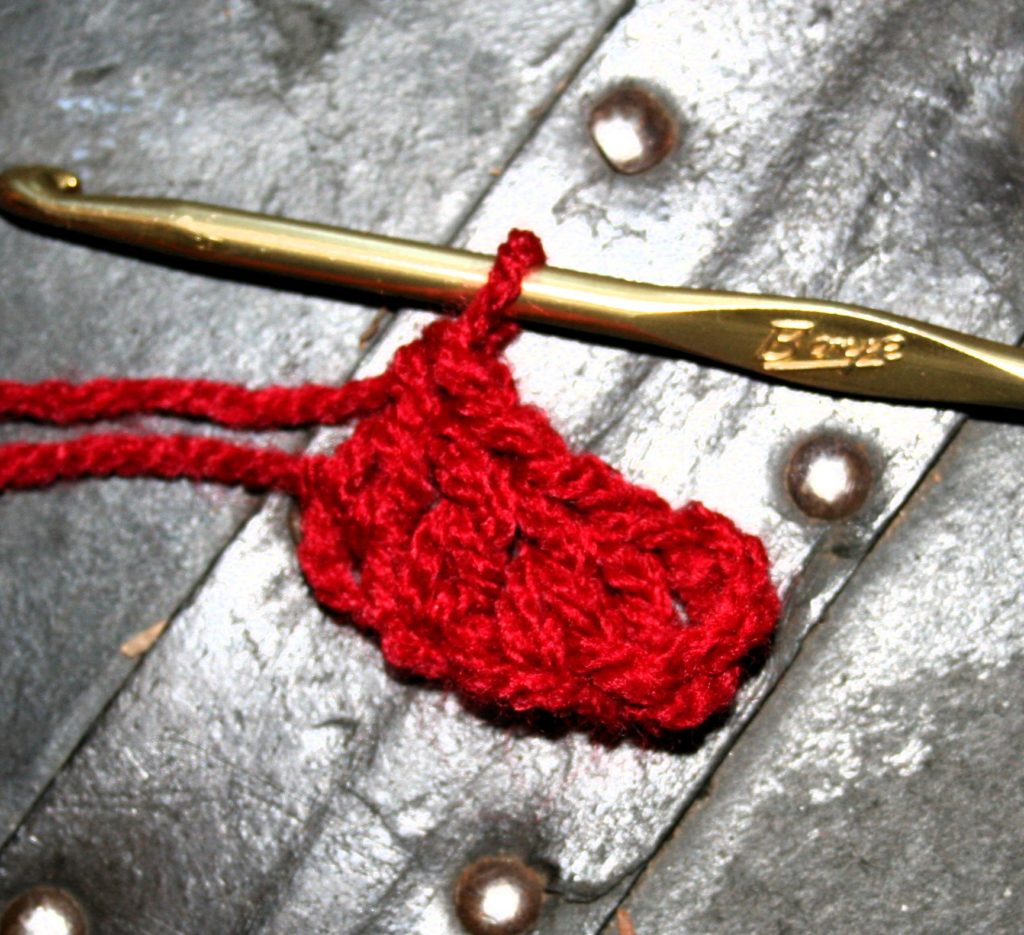
Now chain 3, and rotate the little block clockwise if your right handed, counter-clockwise if you are left, so that you work the next 4 double crochet in around the post of the last dc created. Work these 4 double crochets.
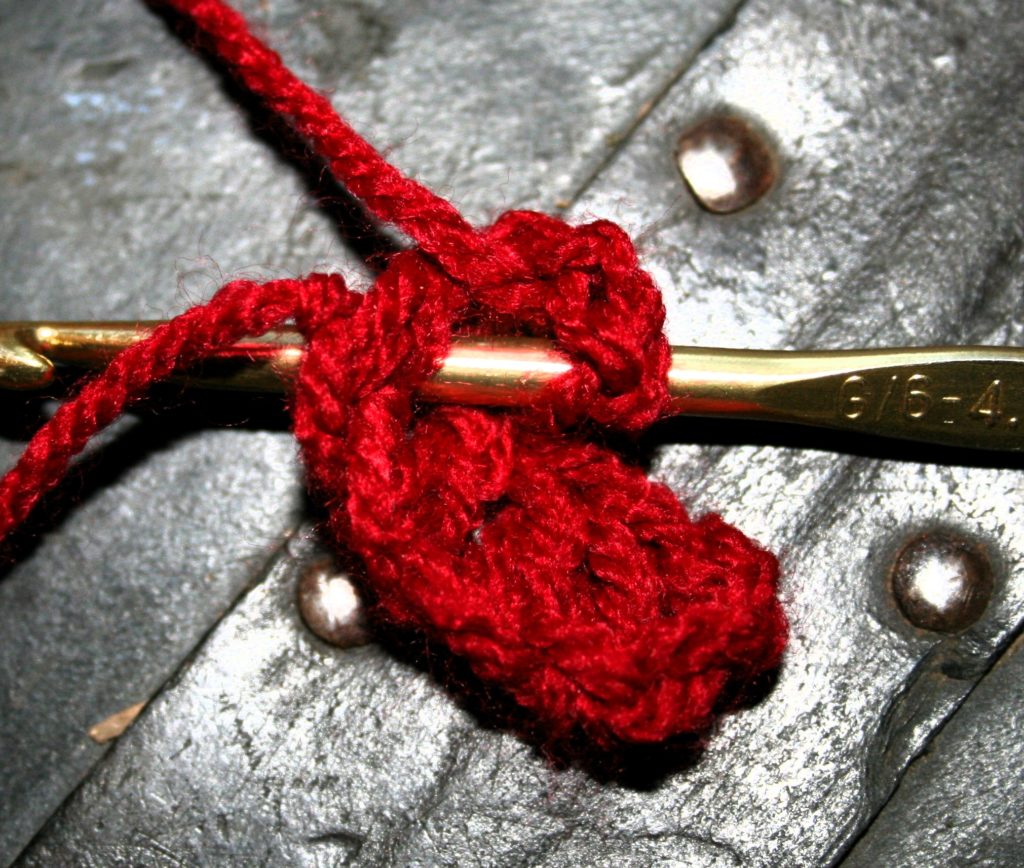
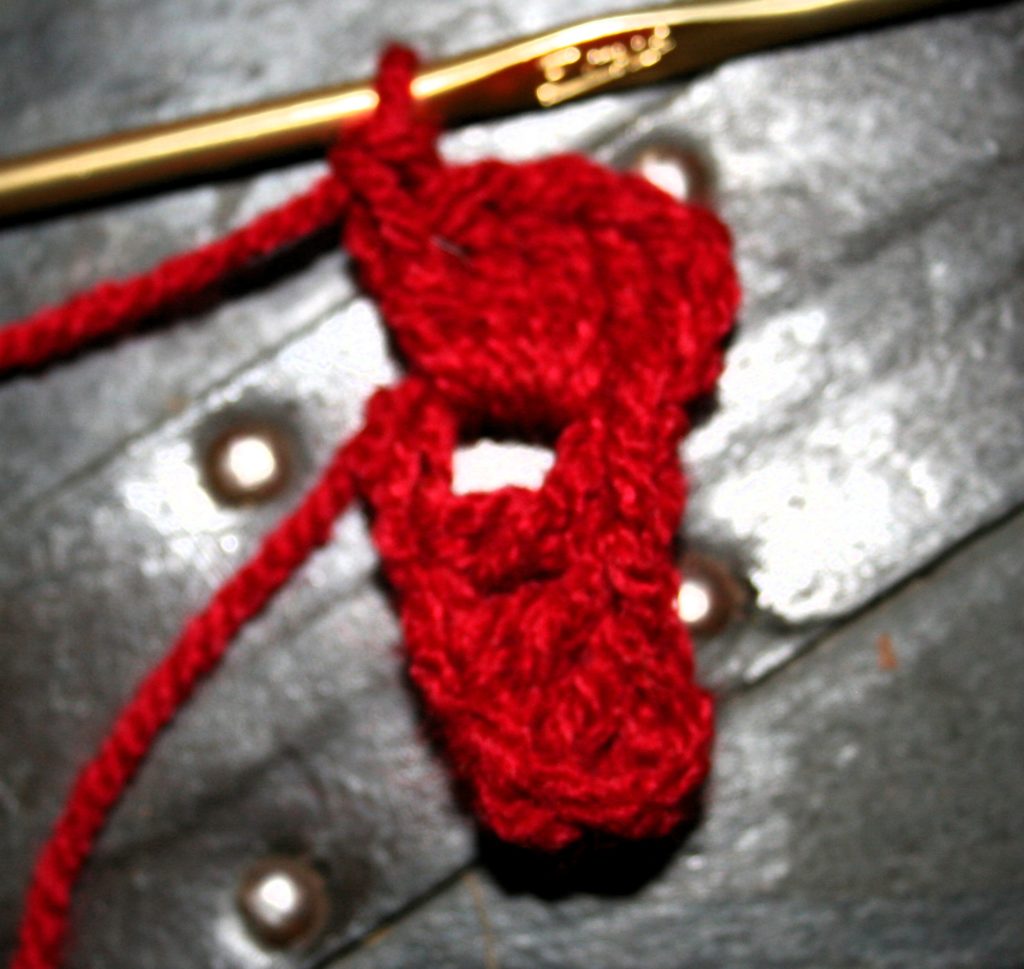
Now 3 bocks
Rotate the blocks again in the same fashion, chain 3, and work 4 dc around the post of the last dc created. You will now have 3 blocks.
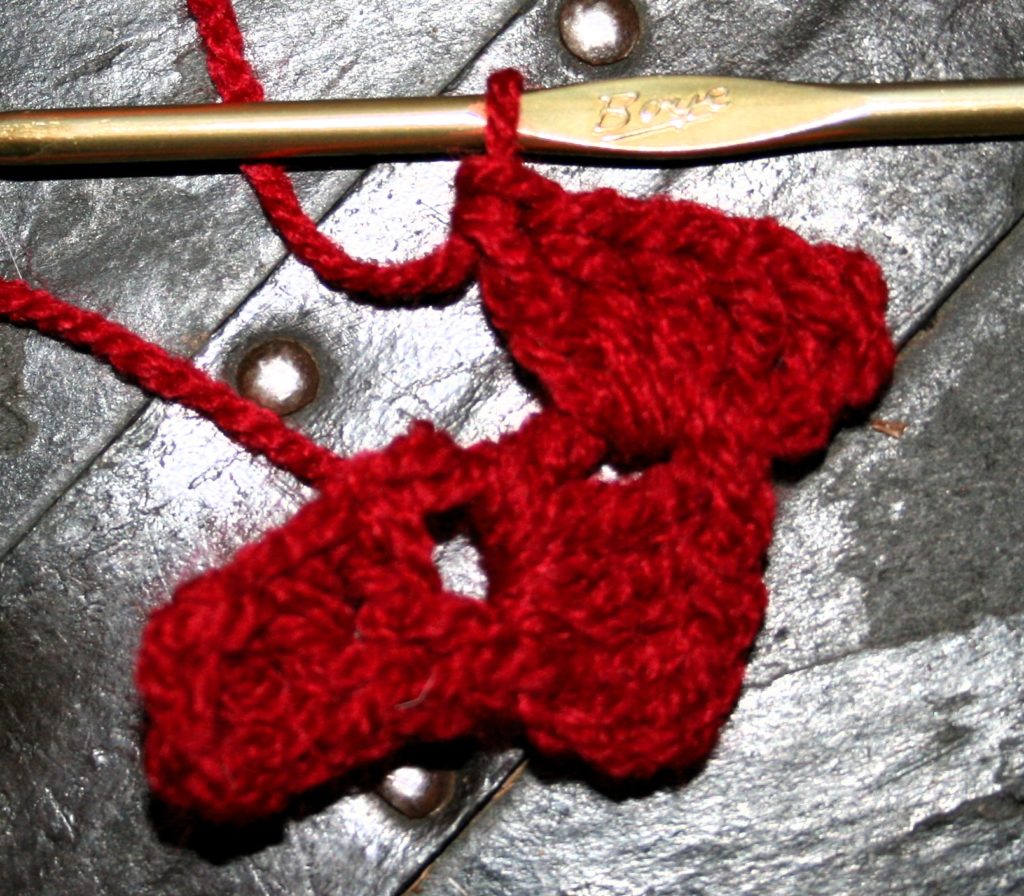
Rotate the blocks one more time, chain 3 and work 3 dc around the last double crochet post created.
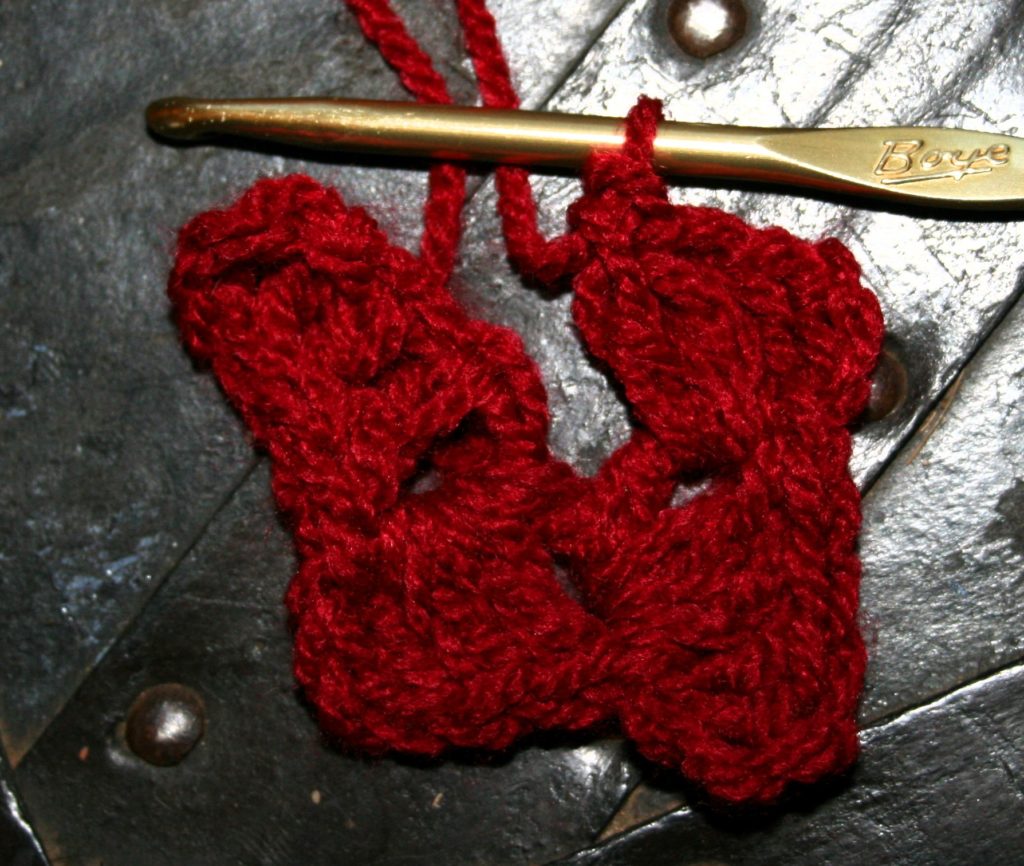
The number of stitches changed in the last block because there is no new block to be created in this round, the reason all the previous blocks had 4 double crochets is because the last double crochet created is to be a base for the next block. As there is no new block after the 4th, it only needs 3 stitches.
Now slip stitch to the top of the adjacent square.
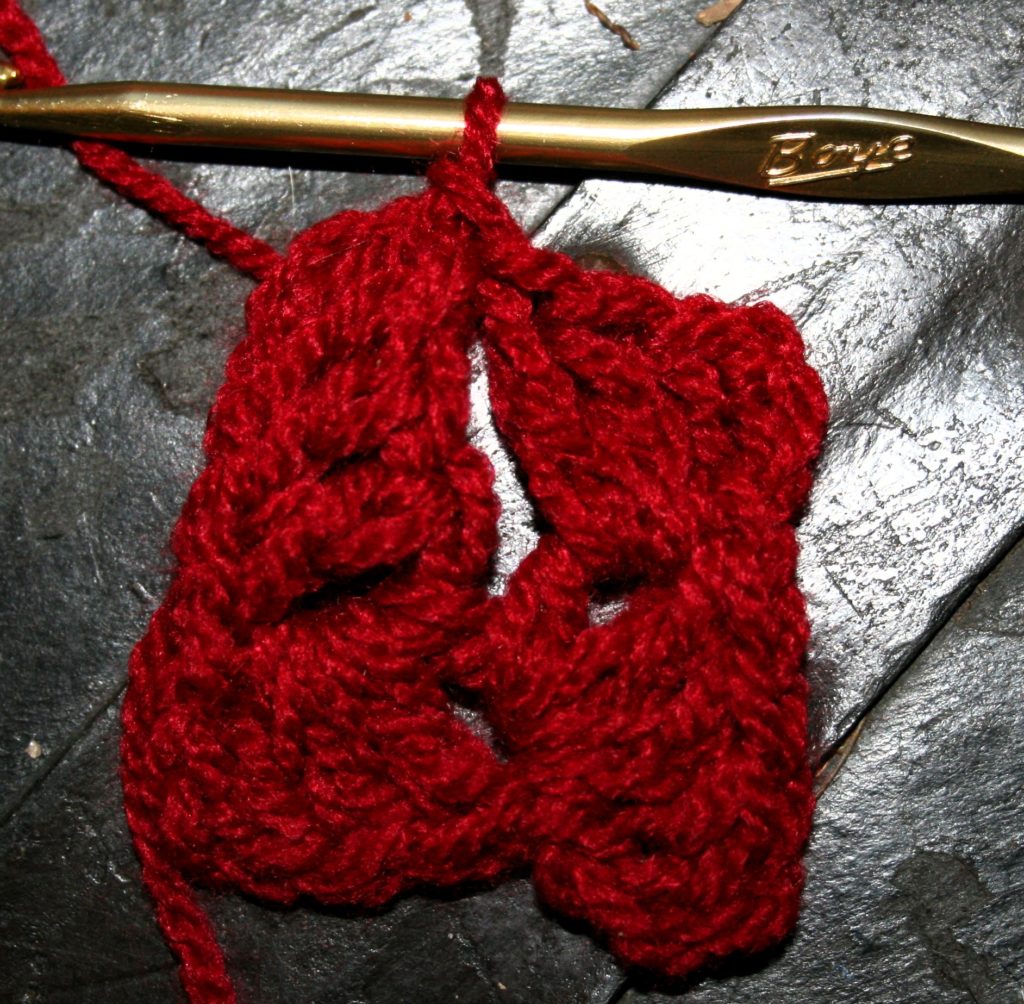
In my samples I have changed colors at this point, but you can easily continue with the same yarn.
Round 2
Turn the work like a page of a book, just like you do with your other crochet projects. Chain 6, dc in 4th chain from hook, and in each chain across. Now slip stitch to the opposite corner of the same block in round 1, this is the next corner from the chain.
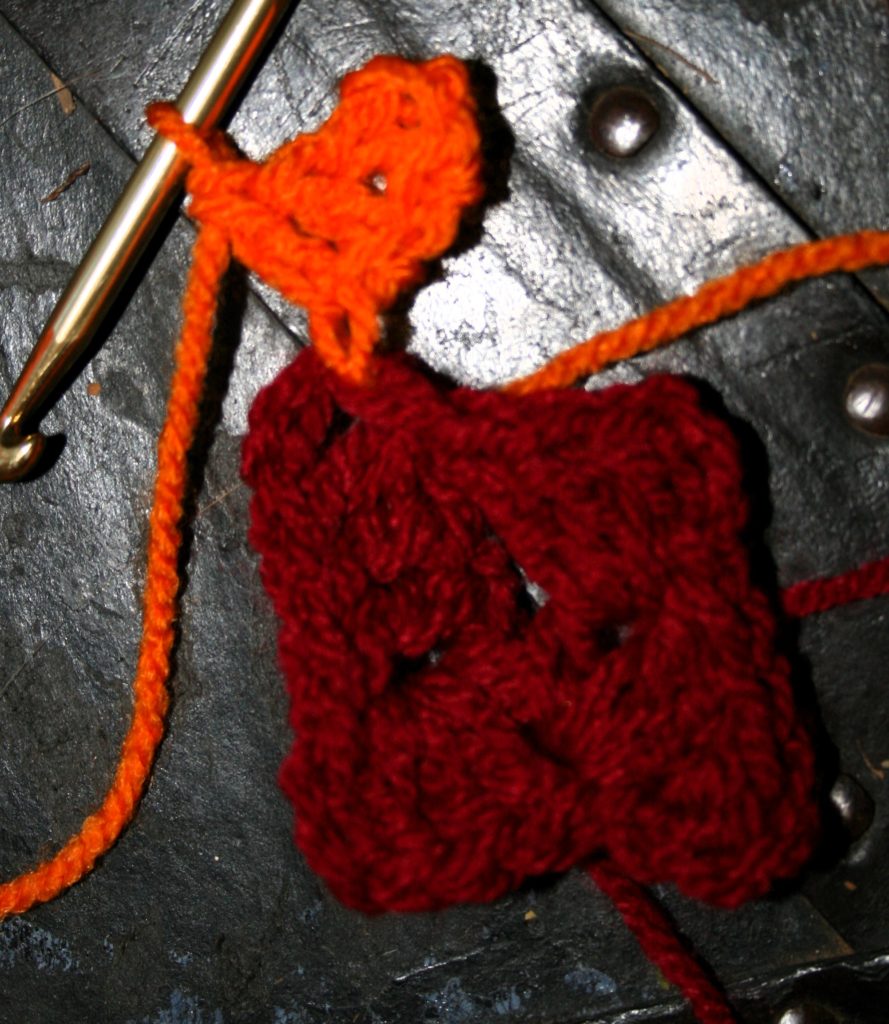
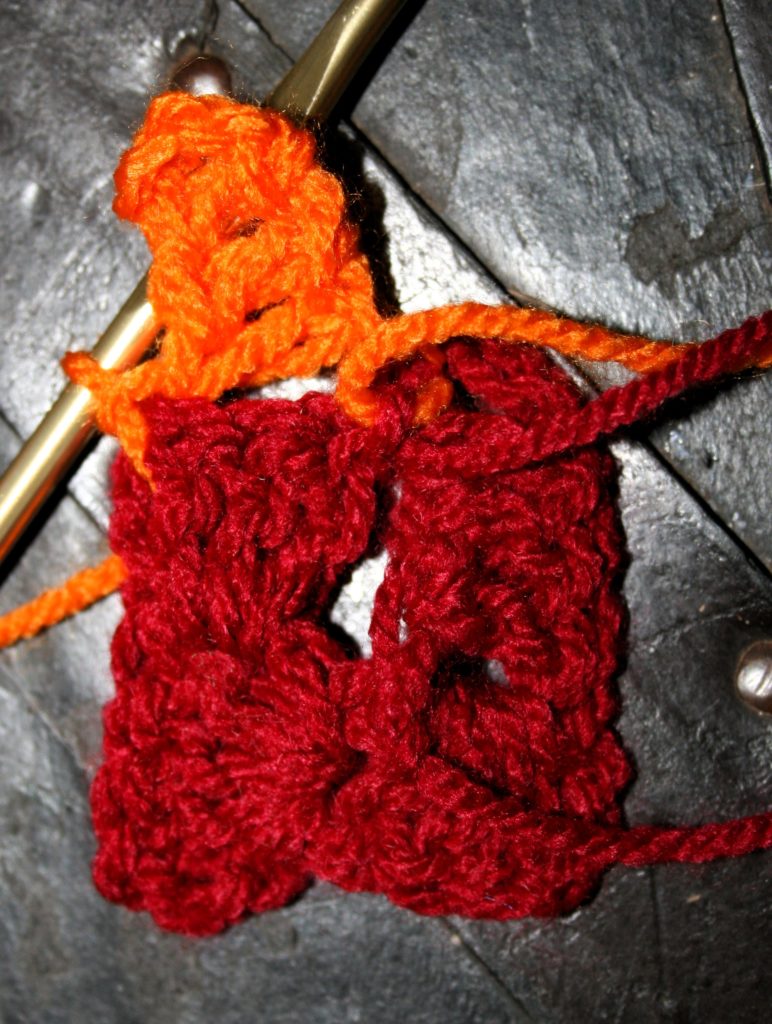
Rotate the blocks again, and chain 3. Work 4 dc in the side of the next block in round 1. Chain 3, and rotate the blocks again, work 3 dc around the post of the last dc made. Slip stitch to the next corner in round 1. This process is repeated for all or Round 2. Slip Stitch to join at the top of the corner of the adjacent block.
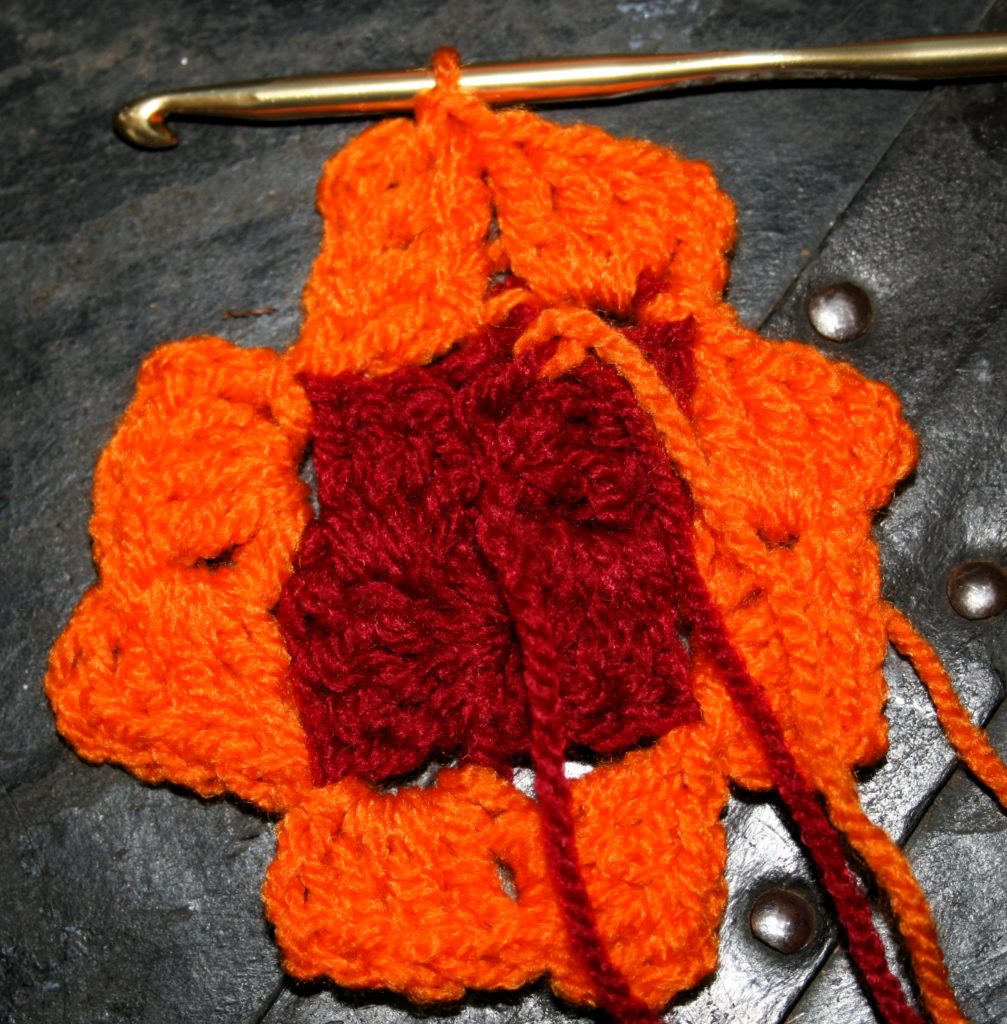
Round 3 and Beyond
Beginning Round 3 is the same process, turn the work like a page of a book. Chain 6 dc in the 4th chain from the hook, and in each chain across. Now slip stitch to the opposite corner of the same block in round 2, this is the next corner from the chain.
Rotate the blocks again, and chain 3. Work 3 dc in the side of the next block, and skip stitch to the top of the next adjacent block. I refer to this as filling in the blocks, in the rounds after Round 3, there will be more steps, but you work them the same.
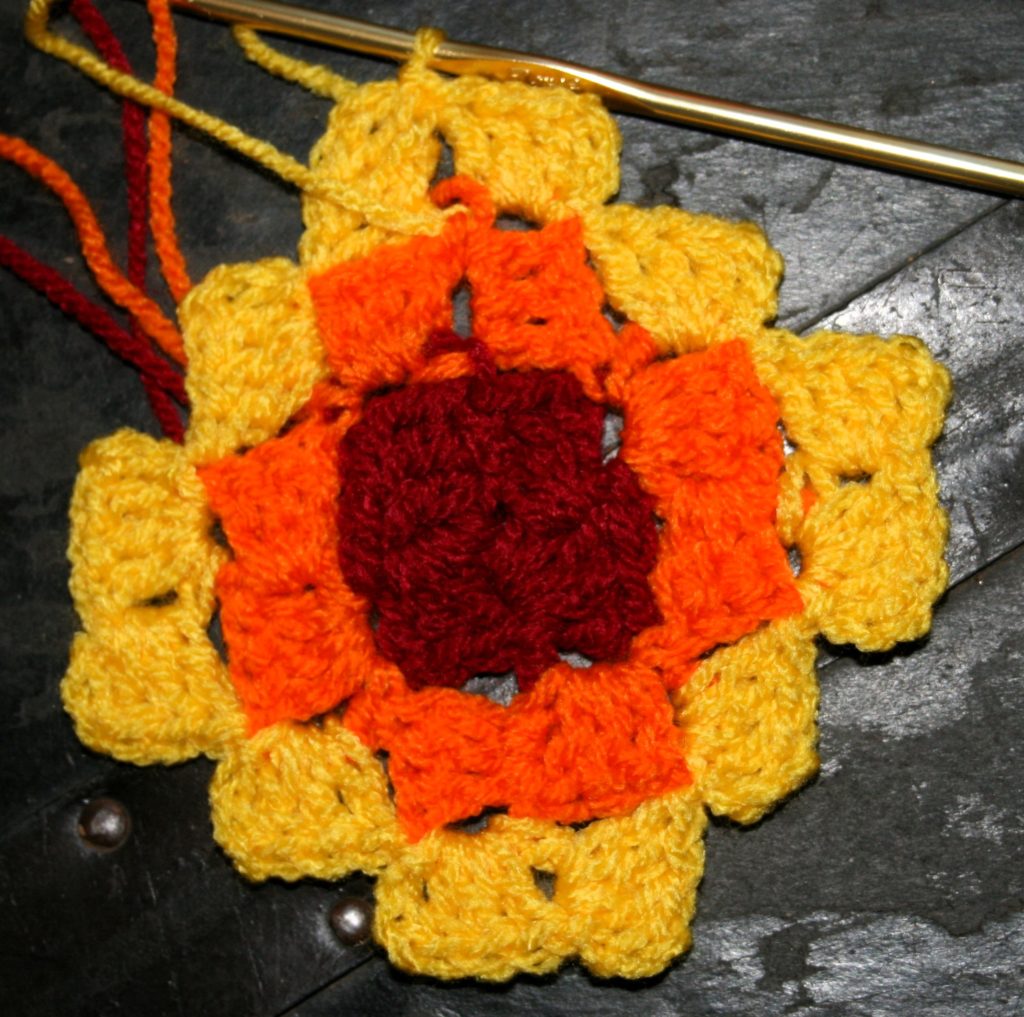
When you get to the top step, the top step created will be the first side worked into on the next rotation, so after creating a chain 3, work 4 dc in the side of the next block in the round below. Chain 3, and rotate the blocks again, work 3 dc around the post of the last dc made. Slip stitch to the next corner in round 1. This process is repeated for all or Round 3 and all subsequent rounds. Slip Stitch to join at the top of the corner of the adjacent block.
Free Pattern
I have worked up a couple of toddler blankets in this technique. If you would like to work them, I have outlined the yarn and color changes I used below, but I used the pattern technique listed above.
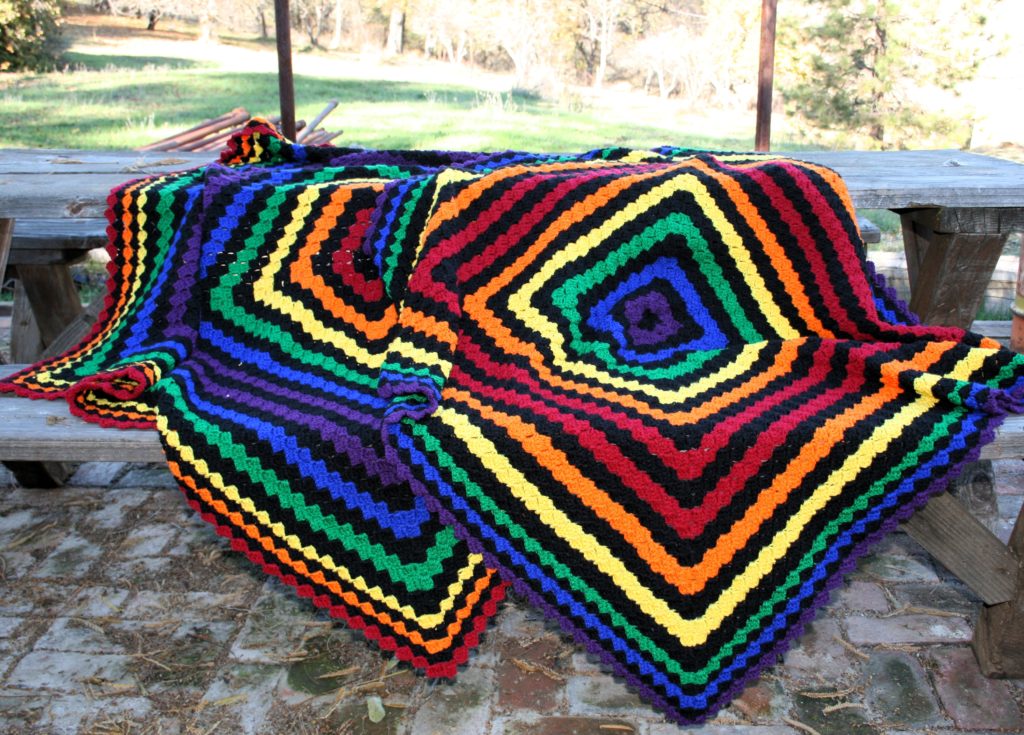
Radiant Rounds Lapghan
Working corner to corner in the round creates a fun and easy blanket. The materials and pattern will make 2 blankets reversing the color orders.
Size: 41” square
Materials
- Scheepjes Colour Crafter medium weigh 100% Acrylic yarn (100g/3.5oz/300m/328yrds)
- 5 skeins #1002 Ede (A),
- 1 skein each:
- #1123 Roermond (B),
- #2002 Gent (C),
- #2004 Brussel (D),
- #1116 Emmen (E),
- #1117 Delft (F),
- #1425 Deventer (G)
- H/8/5.00mm crochet hook
Pattern
Rnd 1: With A, ch 7, dc in 4th ch from hook, and each ch across, rotate (clockwise if right handed, counter-clockwise if left handed), ch 3, 4 dc around post of last dc created, rotate, ch 3, 4 dc around port of last dc created, rotate, ch 3, 3 dc around post of last dc created, sl st to adjacent block, turn.
Rnd 2: Ch 6, dc in 4th ch from hook, and each ch across, sl st opposite corner of block below, rotate, [ch 3, 4 dc around post of block below, ch 3, rotate, 3 dc around post of last dc created, sl st to adjacent block] 3 times, ch 3, 3 dc around post of block below, sl st to top of adjacent block, turn.
Rnd 3-42: Ch 6, dc in 4th ch from hook, and each ch across, sl st to opposite corner of block below, {rotate, [ch 3, 3 dc around post of stitch below for each step block until top step] across to corner, ch 3, 4 dc around post of stitch in block below, rotate, ch 3, dc in around post of stitch just created, sl st to adjacent block} 2 times, [ch 3, 3 dc around post of stitch below for each step block until top step] across to corner, ch 3, 3 dc around post of stitch in block below, sl st to top of adjacent block, turn.
Fasten off at the end of Rnd 42
Weave in ends, block if desired.
Color Sequence (lapghan 1/ lapghan 2)
- Rnd 1-2: A
- Rnds 3-4: B/G
- Rnds 5-6: A
- Rnd 7-8: C/F
- Rnds 9-10: A
- Rnds 11-12: D/E
- Rnd 13-14: A
- Rnds 15-16: E/D
- Rnds 17-18: A
- Rnd 19-20: F/C
- Rnds 21-22: A
- Rnds 23-24: G/B
- Rnd 25-26: A
- Rnds 27-28: G/B
- Rnds 29-30: A
- Rnd 31-32: F/C
- Rnds 33-34: A
- Rnds 35-36: E/D
- Rnd 37: A
- Rnds 38: D/E
- Rnds 39: A
- Rnd 40: C/F
- Rnds 41: A
- Rnds 42: B/G

